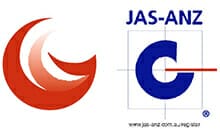CNC Machined vs Forged. High Level manufacturing for very different needs.
CNC Machining and Hot Forging are two very different manufacturing processes for very different applications. Both methods of metal working are used extensively across a range of industries, from mining and construction to marine and aerospace.
Forging is the preferred manufacturing method when tensile strength, durability, and flexibility are the most critical aspects of a part – when toughness matters. Machining is a much more precise method, and is the process of choice for parts that need to adhere to tight tolerances, and for extended runs of such parts. Generally, CNC Machining also allows for lighter parts, if that’s also a requirement.
Stuck trying to decide which method is going to be most appropriate for your application? Here, we’ve broken down the processes and their differences to help you choose the best option.
The Key Differences, Forging vs Machining
Forging is a process by which heat is applied to the metal workpiece to make it malleable and pliable. The metal is then shaped and manufactured using heat and compressive forces. There are a wide variety of different methods of shaping the metal to a different shape during the forging process.
Traditionally, the glowing-hot steel or iron was placed on an anvil and beaten with a hammer. As technology progressed, power hammers were invented and rose to popularity, before being rivalled by the use of dies and presses.
Here at Greg Sewell Forgings, we primarily hot-forge using double-acting drop hammers and horizontal upset forging machines in conjunction with closed die impressions and forging inserts and punches.
On the other hand, Computer Numerical Control Machining (CNC) is a computerized process that passes a piece of metal into a machining tool. The machine is programmed with sensors built to position the piece of metal, and a rotary tool effectively cuts away unwanted parts of the clump of metal to form the specified part. This process can create smooth curves, and it is fully motorized and controlled by a computer panel.
The fundamental difference between the two is that CNC Machining, or any form of machining, is a reductive crafting method. Meaning parts are created by removing unwanted material, whereas forging is the reshaping of a piece of raw material into a desired shape.
Forging
Advantages of forgings
Compared to machining, forging metal parts offer better strength and durability, depending on their size and application. Forging is primarily concerned with the shaping of solid metal parts via drop or upset forging, for example, and is designed to maximize the integrity and durability of the part by preserving and refining the grain structures.
Forged parts are therefore ideal for high-stress applications. A forged hexagon or head-shaped bolt, for example, must undergo severe stress and fatigue throughout its lifetime, thus requiring a superior level of strength and ductility. In contrast, machining or casting processes would not achieve this desired grain structure.
Disadvantages of forgings
One of the downsides to forging is the initial cost of tooling. While machining can be done from a computer-generated model, hot-forged pieces utilizing the hammer and die method require the moulds to be carefully manufactured first. With the advent of computer simulation, dies can be made precisely to work the first time they are set into the hammer, with minimal adjustment and refining.
Another potential issue is the finish of a forged part. Put simply, forged parts are rough. The surface is rarely smooth, and miles away from the polished result from machining. For many applications requiring forged parts, this isn’t an issue. But where tight tolerances are critical, secondary finishing will be required, adding to the cost. Finally, forging is also limited to the size of the part to be shaped, as well as handled into the hammer or horizontal upsetter.
CNC Machining
Advantages of CNC Machining
CNC machining services are suitable for producing pieces of complicated or acute-angled shapes. CNC machining is also more convenient and cost-effective for one-off production and those looking to manufacture multiple designs. CNC machines are also utilized to manufacture the forging dies for the hammers and horizontal upsetters. Once the dies have been proven on the production floor, the CNC program is stored for future re-cutting of the same dies, after they wear, or some of the sub-routine modules are utilized for other, similar type products. Surface finishes on CNC machined parts are usually high quality and are very consistent, while cast or forged parts are typically rougher in appearance.
If you have unique needs, such as internal threads or sharpened edges, and you are not aiming for mass production output, CNC is the best choice for you. While slower than forging, CNC machining services can deliver as many identical parts as required, especially complex and tight-tolerance parts.
Disadvantages of CNC Machining
CNC machining takes time. And compared to forging, this method makes it harder to produce basic parts quickly. The true expense, however, is in the amount of waste produced. Metal is removed from each fabrication resulting in shavings that can only be sold for scrap. This means that production costs can add up fast if you’re producing a large number of complex pieces with excess waste.
CNC machines are complex pieces of equipment with multiple motors and moving parts. This means that running the machine and keeping up maintenance like oiling and constant repairs will increase the operational costs.
Making a decision between Machining & Forgings
Given the scale of a standard volume of runs in Australia, CNC machining services are probably the most useful alternative across a variety of situations. However, forging is the way to go if you’re looking for a stronger, more tactile production.
However, the two processes are also highly complementary. It’s often the case that forging is used to impart the strength characteristics, and then CNC is used as a finishing operation, delivering high levels of precision and surface finish which further aid fatigue life/ durability of the final components. At Greg Sewell Forgings, we synthesise both processes, giving you the most cost-effective result, in terms of monetary savings as well as the durability of the product.
If you are still unsure about which manufacturing process is right for you, consult one of our team of highly experienced team members or engineers. We have over 50 years of experience in producing and supplying forged products for a wide range of industries, so contact us today on +61 3 8301 1500.
Read about: Forged Stainless Steel Threading





